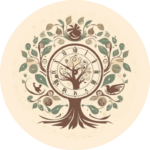Have you ever wondered where the word ‘Easter’ comes from? Let me introduce you to the Germanic goddess of dawn and spring, Eostre, after whom Easter was possibly named. (Historians and folklorists are still debating this, largely due to the paucity of sources about her.) Like many other Anglo-Saxon deities, Eostre was a victim of the expansion of Christianity, as …
The Surprising Connection Between Freud and Greek Mythology
If there’s one person who thought and wrote about penises a lot, it was Sigmund Freud (1856-1939), the ‘father of psychoanalysis’. Like many nineteenth-century intellectuals, Freud was interested in sex and sexuality, and how lived experiences shape our minds. For men like him (for it was mostly men who were writing about this subject), Greco-Roman antiquity was key to understanding …



